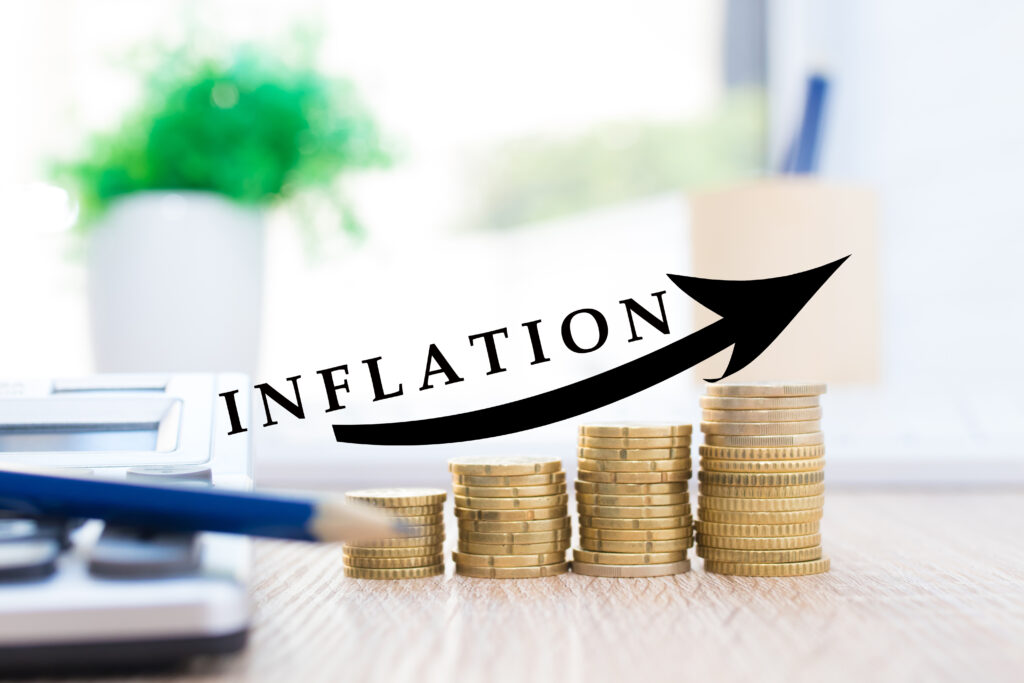Inflation Information
January 16, 2025
Despite my sincere hope we would be talking about something else in 2025, inflation was back in focus this week. And after a volatile start to 2025, markets viewed the inflation data as a reason to “smile.” Let’s take a look at what these reports told us – and what they may mean for markets moving forward.

Producer Price Index
Up first was Tuesday’s Producer Price Index (“PPI”) report. This report, which tracks wholesale prices, showed a 0.2% rise in December (below expectations of 0.3% and also below November’s read of 0.4%).
The year over year increase rose to 3.3% (up from 3% in the prior month). Energy prices were the main contributor (up 3.5% in the month due to a nearly 10% increase in gas prices)
The core PPI metric (which takes out the volatile food and energy items), was unchanged in December (versus an expected rise of 0.2% and in line with November’s no change). The yearly rate also increased slightly (up 3.5% versus November’s 3.4% increase).
Consumer Price Index
On Wednesday, we got a look at the change in prices paid by consumers via the Consumer Price Index (CPI) report for December. At first glance, there was nothing to celebrate in this report. The reading showed that prices continue to increase, with headline CPI rising 0.4% in the month (slightly above 0.3% expectations and the largest monthly move in almost a year). Annual headline CPI rose 2.9%, ahead of the prior month’s 2.7% as well as the expectation of 2.8%.
And yet, markets reacted very positively to this report (with interest rates falling (bond prices therefore rising) and equity prices rallying strongly). This reaction was likely in large part due to better news as it relates to the Fed’s preferred inflation measure – core CPI reading (which excludes the more volatile components of food and energy). This metric came in a 0.2% monthly increase (lowest reading since July 2024 and better than November’s 0.3% increase). The annual core CPI rate rose 3.2%, below November’s 3.3% and softer than expectations as well.
Another CPI metric used by the Fed (called Supercore CPI which is core services less housing) also rose by just 0.2% (lowest since July) which may have given markets more optimism as well.
Again, this report led to positive market moves for both bonds and stocks -perhaps due to the positive trends within the Core measures, as well as the anticipation leading up to the report that it would be worse than it was.
What does this all mean?
While there is some good news in this week’s inflation numbers, the data does seem to confirm that inflation remains (for the time being) above the Fed’s stated 2% inflation target. However, progress has been made and certain key items (like shelter) are starting to show some slowdown. We’re close – but not there yet.
As we’ve discussed in the past, the Federal Reserve has a dual mandate as it relates to monetary policy for the United States – maximum employment (labor markets) and price stability (inflation). They will take data concerning both of these mandated into account when making their next rate decision later this month. With the labor market holding it’s own and inflation not trending down at a rapid clip, the question is what will the Fed do with rates.
This latest inflation report is likely to put to rest the recent chatter that the Fed would have to raise rates soon. That remains highly unlikely. However, it also is looking unlikely that the Fed will cut rates since the labor market isn’t in need of help and price levels remain somewhat elevated. Markets seem to agree, with the futures market pricing in a 97% probability there is NO rate cut this month (and won’t be one until the second half of 2025).
With all that said, rates at the short-end of the interest rate curve are likely to remain at their current levels for the start of 2025. This is good news for savers as even cash will continue to pay over 4% yields. Rates have been moving up at the longer-end of the yield curve as well (which has spooked equity and bond markets alike to start the year). It’s our belief this is more an estimation of increased supply (to fund the new administration’s priorities given the new Treasury Secretary’s stated preference for longer-date bonds) than it is renewed inflation fears but time will tell.
Given that rate dynamic, we are favoring short-to-intermediate duration bonds to earn a very meaningful yield, while benefiting on the price side (eventually) from some rate decline in the future – all while not exposing ourselves to potential risk if rates back up further once the new administration takes office.
And while equities do not like higher interest rates (remember – an equity price is the present value of future cash flows, with interest rates being the denominator) – the underlying earnings and cash flow growth of many US companies are likely to overpower slightly higher rates.
All that to say, stay on plan and continue to invest. We’ve had two years of 20%+ returns in equity markets. Some return to normalcy is to be expected and will still do wonders for your progress towards your ultimate financial goals.
Onward we go,

Leave a note